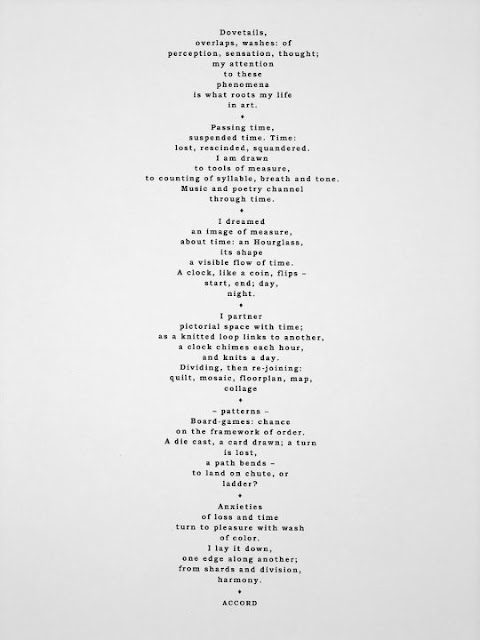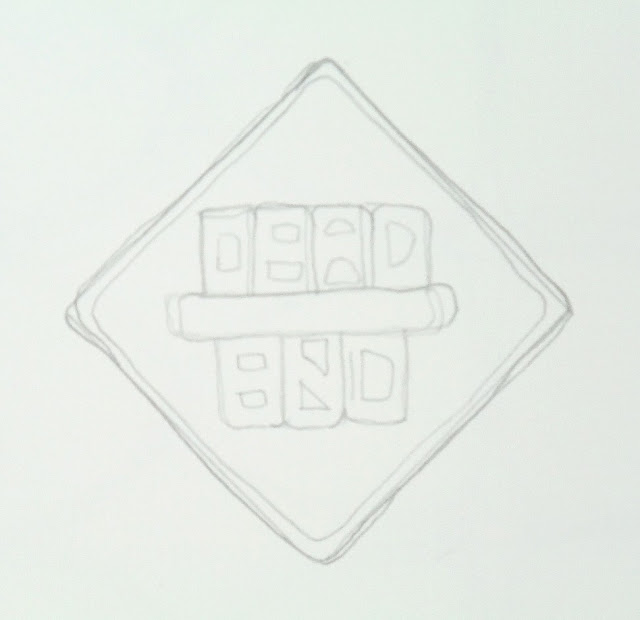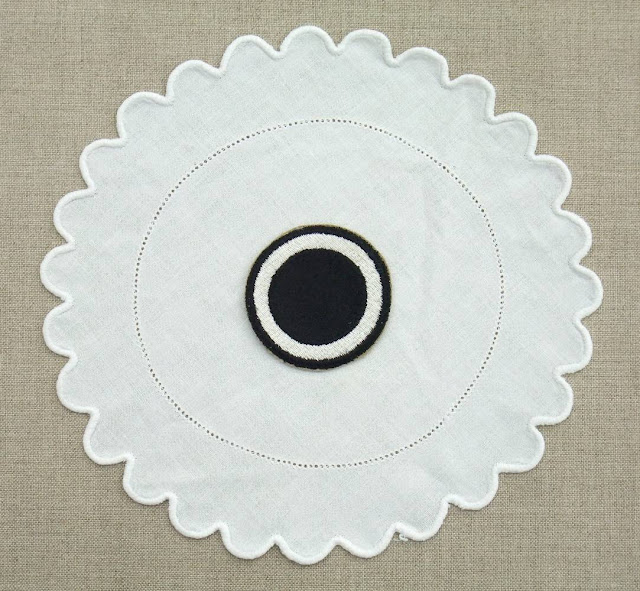 |
| "Limbo," 2012, oil on panel, 6 x 4 inches |
I'll begin with a denial -- I'm not a slow reader; but I can be distracted and slow to settle into my reading. I'm doing too many things at once, and as a friend observed today, I invest myself entirely in whatever is currently at hand, whether my music, art, writing, or just being with a friend, attending to another's need. So I don't actually read slowly, but intermittently, and ambitiously; I frequently find myself, when sitting down to read, going back to reread what I finished in my last sitting. I'm like a wide slow stream with eddies, bends and loops; or maybe like Penelope, weaving, unweaving, beginning again to weave.
I'm taking this kind of long time with a book I found last month. Here's a photo of its beautiful cover, the image is by Ann Hamilton. The book is "The Poet's Freedom: A Notebook On Making," by Susan Stewart, poet and professor at Princeton University. The book was published by The University of Chicago Press, 2011. The cover and title caught my eye in the bookstore, and the chapter headings stirred my interest.
I am still in the first chapter, headed Beginning - (I wryly confess I am beginning it over and over). Coincidentally, as I was opening the book, I was also writing my new statement for the work that will soon be exhibited online and in my studio. I'm titling my show "re:Vision," also the title of a blog post in January when I was formulating these thoughts. Here's the text of my statement, which doesn't describe the objects I've made, but my objectives in making them - (these have become rather consistent, however much their expression changes):
* * * * *
Visual sensation stirs my attention to
perception and thought; as emotion and thought impact senses and
perceptions, my curiosity engages. My imagery derives from such
observations, the dovetails and overlaps of lived experience.
My
paintings chronicle my choices; to choose is to begin, to be alive, to
be human. Several of these pieces began as other works I’d thought were
finished, but which I turned back into beginnings. I’m calling this
assembly of work “re: Vision,” to disclose the revisiting, and refer to
my preoccupations with our powers of perception and thought.
I
compose my pictorial abstractions to excite associations. While
nature’s phenomena inform the paintings, our human nature provides the
long warp on which I weave. I have some favored subjects and allusions
to arrange, like Morandi’s bottles. Among them figure time, games,
measures, maps, reflections and shadows. Artistic influences range
widely, from Mughal miniatures to Modernism. I delight in color,
harmony, patterns, and ambiguities. I construct and destroy, obscure and
clarify; I celebrate choice, and our humanity.
February, 2012
* * * * *
My inner ear perked up today with my reading, as I came
to the following passage, in which Stewart is quoting Aristotle in his
Nichomachean Ethics:
"All art is concerned with the realm of coming-to-be, i.e., with contriving and studying how something that is capable both of being and not being may come into existence, a thing whose starting point or source is in the producer and not in the thing produced."
That last, about the starting point, speaks also to the reason that I feel that I am a painter first and everything else I do falls into place behind that. In painting, the effort isn't only to execute the work with skill and expression, but to initiate the concept and determine the content. As Stewart says earlier in the chapter (p.12),
"It is difficult, certainly, to argue for making more things. If we have an environmentalist's conscience, restraint and even withdrawal seem the most moral responses to the natural world. At the same time, we constantly feel the pressure of the need to make new art... Indeed, every generation seems to have an obligation to the future not only to represent its thinking in created forms but also to use created forms as a means of thought itself. The necessity of starting out, of new beginnings, is as central to our existence as life itself - the very nature of our vitality."
I am privileged by this drive to compose. My chronicle is my exercise of choice. To choose, to begin, is to be alive, and human.
Susan Stewart chose this poem by Emily Dickinson as the epigraph for her beautifully composed and realized book, which I've just begun, and begun again, several times. The next chapter is headed Praising.
























